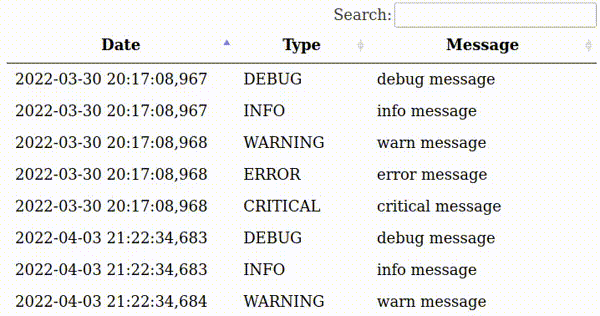Logging can help you better understand the flow of a program and discover undesirable behaviour, which you might not even consider while developing. Logs give you information about scenarios that an application is going through. You can label this information according to its importance: debug, info, warning and errors. Logs can provide more insights than a stack trace by telling you what the program state was before it arrived at the line of code where the error occurred.

Continue reading “Web-gui for Python logs”


